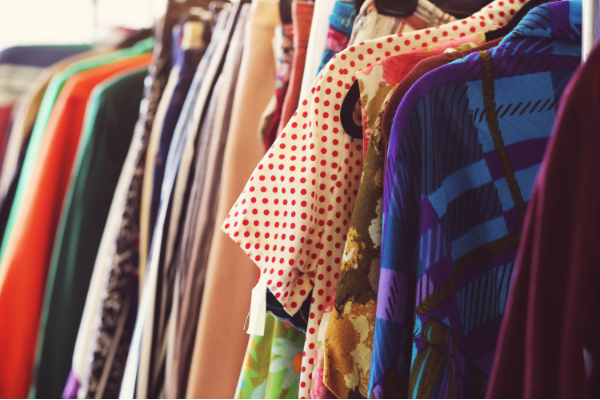Second-hand clothes are becoming increasingly popular and occupy an ever-increasing share of the clothing market. Young people in particular no longer find them dusty and boring, but sustainable, trendy and cheap.
"The figures are impressive," professor and lecturer in fashion management at the University of Antwerp Annick Schramme told VRT. Commercial retail chains are also starting to increasingly focus on the more sustainable second-hand market.
"The second-hand market is currently growing three times as fast as the total fashion industry. By 2030, the second-hand trade is even expected to be twice as large as high street fashion," she said.
Today, people mainly still buy their clothes from the big chains, according to Schramme. This is cheap clothing, which is often only worn for a few years. But while the volume of this so-called 'fast fashion' is more or less stabilising, the second-hand market is on the rise. This runs largely online, via platforms such as the popular Vinted site.
"You can already see that some chains are responding to this and, for example, provide a corner within their own label to bring back vintage stock," Schramme said. "Even the big retailers. For example, last year H&M set up a collaborative project with a Belgian vintage store, where they could sell a selection of their vintage clothing in H&M."
True vintage?
"To be truly vintage, clothes must strictly speaking be at least 25 years old," Schramme explained. "Vintage is a quality label: they are original clothes of a certain label that have become this old and that are often still in good condition. There, the question of authenticity arises. It is mainly about a group that specifically looks for that."
Additionally, in recent years, a very large second-hand market has also emerged that is younger. "Young people do not really care how old clothing is," said Schramme. In that case, 'second-hand' refers to all clothing that has already been worn by someone and that gets a second life through the sale.
For Schramme, the popularity of the second-hand market can be explained by a combination of factors. "On the one hand, I think there is a bit of a social longing for the past. There is a retro trend. We also see this in other sectors, such as furniture sales and gastronomy."
Related News
- Made in Asia: Cosplayers, artists and tech fans meet in Brussels
- Half of Belgians bought second-hand in 2021
- Second-hand sports clothing shop to open in Brussels
But the price also plays a role: second-hand clothing is often cheaper. And more sustainable as well. "Young people, in particular, are active on these online platforms from a greater sustainable awareness," she said.
"For them, it is often not only about buying, but also about selling second-hand. With Generation Z, we see that they really become entrepreneurs of their wardrobe: they wear clothes, but then also sell them again. I even know more young people who sell than buy on such platforms."
Then there is another important reason: the choice. "People are actually looking for something personal," Schramme said. "It is also a bit of a reaction against ‘fast fashion' where everyone wears the same thing. Young people are looking for their identity and want something personal. That is certainly a reason why these platforms are so successful."
What about sustainability?
Buying second-hand also has some disadvantages, Schramme added. "You can't feel it, you can't smell it, you can't try it on. But the threshold is so low that people are often really comfortable with it. If it does not fit, it is sold again. So, it's actually very accessible."
Young people also look to the sustainability factor in the second-hand clothing market, which may not be – in all cases – as straightforward as it first appears. "Sustainability is of course a complex issue," said Schramme.
"On the one hand, you ensure that garments can have a second life and that clothing surpluses at chains, for example, do not have to be burned. But on the other hand, you have all the logistics and transport," she said. "If you really want to live sustainably, you have to take all those factors into account. But it is certainly a step in the right direction."

